Experience Spiritual Serenity at Shalu Monastery: Your Ultimate Travel Guide
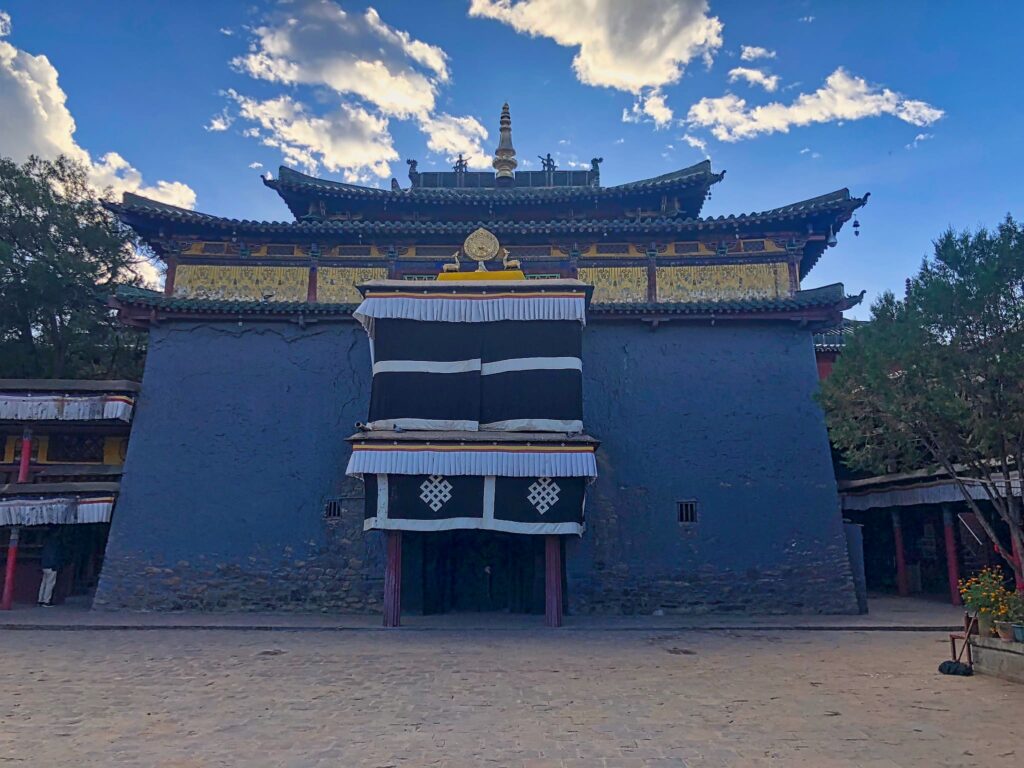
An Essential Guide to Visiting Shalu Monastery
Nestled in the serene landscapes of Tibet, just 20 kilometers southeast of Shigatse, lies the enchanting Shalu Monastery, a hidden gem waiting to be explored. Founded in the 11th century, this sacred site is a captivating blend of Tibetan and Chinese architectural styles, reflecting centuries of cultural interplay. As you approach the monastery, the air thickens with a sense of spirituality and history, inviting travelers to delve into its rich tapestry woven with artistic brilliance and profound teachings.
Shalu Monastery is not merely a sanctuary for prayer; it is a vibrant center of learning, where monks engage in the study of Buddhist philosophy and meditation. The walls of its main hall are adorned with breathtaking 14th-century murals that vividly narrate tales from Buddhist scriptures and Tibetan folklore. These artistic masterpieces transport visitors into a world steeped in myth and legend, making every corner of the monastery a feast for the senses.
As you wander through the labyrinthine corridors, you’ll encounter ancient prayer wheels that whisper the mantras of devotion, sacred stupas that hold centuries of wisdom, and peaceful courtyards that beckon you to pause and reflect. The tranquility envelops you, offering a moment of respite from the hustle of modern life, while the dedication of the monks serves as a poignant reminder of the timeless values of faith, compassion, and humility.
With an elevation of nearly 3,900 meters, the monastery not only provides a glimpse into Tibet’s spiritual heritage but also offers breathtaking views of the surrounding mountains and valleys. The best time to visit is during the mild months of spring and autumn, allowing you to fully appreciate both the natural beauty and the spiritual aura of this remarkable site.
Whether you are a seasoned traveler or a first-time visitor to Tibet, Shalu Monastery promises an unforgettable experience that transcends cultural boundaries and invites you to connect with the divine. Prepare to embark on a journey that will resonate long after you leave this sacred sanctuary.
In This Guide
- An Essential Guide to Visiting Shalu Monastery
- The Rich History and Legends of Shalu Monastery
- Main Highlights: What You Absolutely Can’t Miss
- Planning Your Visit: A Practical Guide
- Tickets: Prices, Booking, and Tips
- How to Get There: A Complete Transportation Guide
- Local Cuisine and Accommodation Nearby
- Frequently Asked Questions
- Final Thoughts on Your Trip
The Rich History and Legends of Shalu Monastery
Nestled in the picturesque landscape of Tibet, Shalu Monastery is a hidden gem that embodies the rich tapestry of Tibetan Buddhist history and culture. Founded in 1040 by the esteemed monk Chetsun Sherab Jungnay, this monastery is renowned for its unique architectural style, which harmoniously blends Tibetan and Chinese influences. This fusion is a testament to the cultural exchanges that have occurred throughout the centuries in this region.
The monastery is not merely a relic of the past; it has played a vital role in the spiritual and educational life of Tibetan Buddhism. It belongs to the Buton school, a suborder of the Sakya sect, which has significantly influenced Tibetan religious thought. The Buton school was established by the revered abbot Buton Rinchendrub in the 14th century, who is celebrated for his scholarly contributions, including the editing of 227 manuscripts of the Tibetan Buddhist Canon. His efforts helped preserve and disseminate the teachings of Buddhism, ensuring that the wisdom of the ages would endure.
One of the most striking features of Shalu Monastery is its remarkable murals, which date back to the 14th century. These vibrant artworks depict scenes from Buddhist scriptures and local folklore, serving as a visual narrative of the spiritual journey and cultural heritage of the Tibetan people. The murals not only provide insight into the artistic achievements of the time but also reflect the monastery’s historical significance as a center of learning and enlightenment. Visitors can easily lose themselves in the intricate details that bring these legends and teachings to life.
Over the centuries, Shalu Monastery has withstood the test of time, enduring natural disasters such as earthquakes that ravaged the region. The most significant of these occurred in the 14th century, prompting extensive renovations that incorporated the expertise of Han craftsmen. This rebuilding effort preserved the monastery’s essence while adding unique architectural elements, like the striking green and yellow glazed tiles that adorn its roofs.
Despite the challenges posed by the Cultural Revolution, Shalu Monastery has maintained its spiritual sanctity and continues to be a place of refuge for monks and pilgrims alike. Today, around 80 monks reside within its walls, upholding the traditions of study, meditation, and devotion that have characterized Shalu for centuries.
As you explore its serene corridors, each step resonates with the echoes of history, inviting you to reflect on the teachings of Buddha and the enduring values of faith, humility, and compassion that transcend time and culture. Shalu Monastery is not just a destination; it is a living testament to the rich history and legends that define Tibetan Buddhism, making it a must-visit for those seeking a deeper understanding of this profound spiritual heritage.
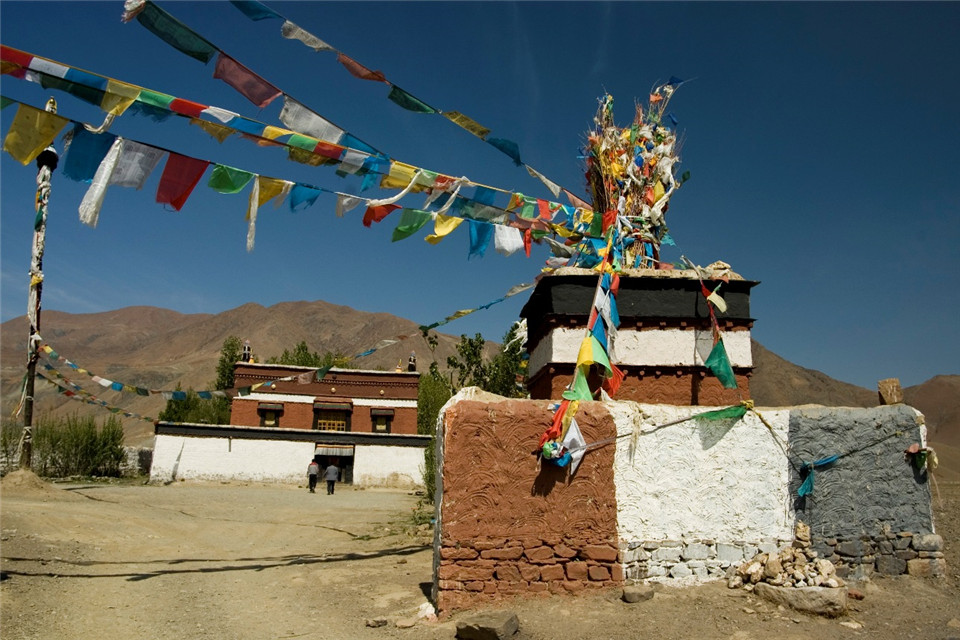
Shalu Monastery.
Main Highlights: What You Absolutely Can’t Miss
Nestled in the serene landscapes of Shigatse Prefecture, Shalu Monastery is a hidden gem that beckons travelers with its rich history, stunning architecture, and spiritual ambiance. Here are the main highlights you absolutely can’t miss during your visit to this remarkable site.
1. Intricate Murals of the Serkhang Temple
The centerpiece of Shalu Monastery is undoubtedly the Serkhang Temple, renowned for its breathtaking 14th-century murals. These vibrant artworks are not just decorative; they narrate stories from Buddhist scriptures and Tibetan folklore, showcasing a unique blend of Mongolian, Tibetan, Newari, and Chinese artistic influences. Take your time to admire the details and let the stories unfold before your eyes.
2. Unique Architectural Fusion
Unlike other Tibetan monasteries, Shalu boasts a distinctive architectural style that reflects both Tibetan and Chinese traditions. The temple’s roofs, adorned with yellow and green glazed tiles, are a testament to the craftsmanship that went into its construction. As you explore, note the contrasts between the intricate carvings and the overall layout, providing insight into the cultural exchanges that have shaped this region over the centuries.
3. The Peaceful Ambiance
Wandering through the monastery’s labyrinthine corridors, you’ll find ancient prayer wheels and serene courtyards inviting moments of reflection. The tranquil atmosphere, enhanced by the gentle sounds of monks chanting and the soft rustle of prayer flags, creates a sense of peace that is both grounding and uplifting. Take a moment to sit in contemplation and soak in the spiritual energy that permeates the site.
4. Learning and Enlightenment
Shalu Monastery is more than just a place of worship; it is a center for the study of Buddhist philosophy. Observe the monks as they engage in meditation, discussions, and prayers, embodying a dedication to their spiritual path. If you’re fortunate, you may be able to join a monk for a discussion about their practices and the principles of Buddhism, gaining deeper insights into this ancient faith.
5. Stunning Natural Surroundings
Set against the backdrop of the breathtaking Tibetan landscape, Shalu Monastery offers stunning views of the surrounding mountains and valleys. Take a moment to step outside and enjoy the fresh air, or capture the beauty of the scenery in photographs. The natural beauty enhances the spiritual experience, reminding visitors of the profound connection between nature and spirituality.
6. Exploring the Monastery Complex
The monastery complex itself is a journey of discovery. With several chapels and an inner kora-pilgrimage circuit, each corner reveals something new. Don’t miss the opportunity to explore the various chapels, each dedicated to different aspects of Buddhist practice and lore. The main assembly hall and the protector’s chapel are particularly worth a visit for their unique artifacts and serene settings.
7. Engaging with Local Culture
As you wander through the monastery, you may encounter local visitors and pilgrims. Engaging with them can provide a richer understanding of the cultural significance of Shalu Monastery within the local community. Observe their rituals and perhaps even share in a blessing or prayer, fostering a connection that transcends language and background.
8. Accessibility and Visitor Information
Conveniently located just 20 km southeast of Shigatse, Shalu Monastery is easily accessible. It is advisable to visit in the spring or autumn when the weather is mild and pleasant. Admission is reasonably priced at CNY 40, and the monastery is open from 9:30 AM to 5:00 PM.
Whether you are drawn by the artistry, the spirituality, or the stunning landscapes, Shalu Monastery promises a memorable experience that captures the essence of Tibetan culture and Buddhism. Don’t miss out on this enchanting destination during your travels in Tibet!
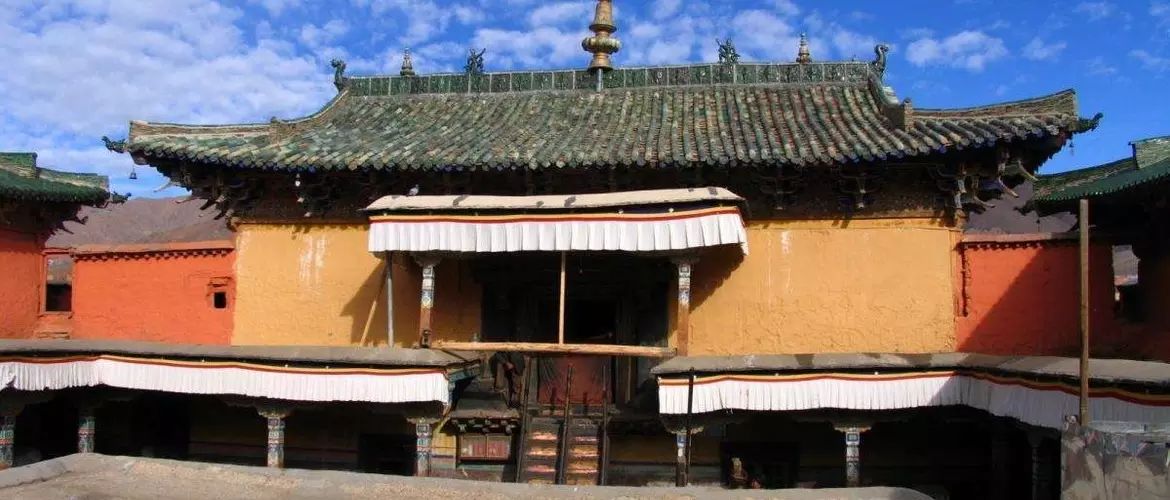
Shalu Monastery.
Planning Your Visit: A Practical Guide
Visiting Shalu Monastery offers a unique opportunity to immerse yourself in Tibetan culture and spirituality. Nestled in the picturesque Shigatse Prefecture, this historic site combines stunning architecture with rich artistic heritage. Here are essential tips to help you make the most of your visit to this remarkable monastery.
Getting There
Shalu Monastery is located approximately 20 kilometers southeast of Shigatse, making it easily accessible for travelers in the region. You can rent a car for around CNY 100 for a round trip from Shigatse. If you’re journeying from Gyantse, the monastery is about 69 kilometers away, also suitable for a day trip.
Best Time to Visit
The ideal times to visit Shalu Monastery are during the spring (April to June) and autumn (September to November) months. During these seasons, the weather is generally mild, allowing for pleasant exploration of the monastery and its surroundings.
Opening Hours and Admission
Shalu Monastery welcomes visitors from 9:30 AM to 5:00 PM. The admission fee is CNY 40, which contributes to the maintenance of this historic site. It’s advisable to arrive early, as some areas may close in the afternoon, and you wouldn’t want to miss the intricate murals and chapels.
What to Expect
As you enter Shalu Monastery, you’ll be captivated by its unique blend of Tibetan and Chinese architectural styles. The main hall, adorned with stunning murals that date back to the 14th century, showcases the artistic brilliance of Tibetan craftsmen. Take your time exploring the labyrinthine corridors, where you can find ancient prayer wheels, sacred stupas, and peaceful courtyards that invite reflection.
The monastery is not just a place of worship; it’s also a center of learning. You may observe monks engaged in meditation and study, deepening their understanding of Buddhist philosophy. Their dedication and devotion are a testament to the timeless values of faith and compassion.
Nearby Attractions
If time allows, consider visiting the following nearby attractions to enrich your experience:
- Yamdrok Lake: Known for its breathtaking turquoise waters, this sacred lake is a short drive from Shalu Monastery.
- Tashilhunpo Monastery: Located in Shigatse, this is one of the most significant monasteries in Tibetan Buddhism, known for its grand architecture and vibrant atmosphere.
- Gyantse Dzong: This ancient fortress offers panoramic views of the surrounding landscape and is a must-visit for history enthusiasts.
Tips for a Memorable Visit
- Dress Appropriately: As a place of worship, it’s important to dress modestly. Long pants and sleeves are recommended.
- Respect Local Customs: Always follow the monastery’s guidelines, such as not touching sacred objects and maintaining silence in prayer areas.
- Photography: While photography is allowed in certain areas, be sure to ask for permission before taking photos, especially of monks or local worshippers.
- Stay Hydrated: At an elevation of around 3,890 meters (12,762 feet), the air can be thin and dry. Drink plenty of water to stay hydrated during your visit.
Conclusion
Shalu Monastery is a treasure trove of spiritual and artistic heritage, offering visitors a glimpse into the heart of Tibetan Buddhism. With its serene ambiance, breathtaking views, and stunning murals, it promises an unforgettable experience. By following these guidelines, you can ensure a smooth, enriching visit to this remarkable site. Enjoy your journey into the spiritual heart of Tibet!
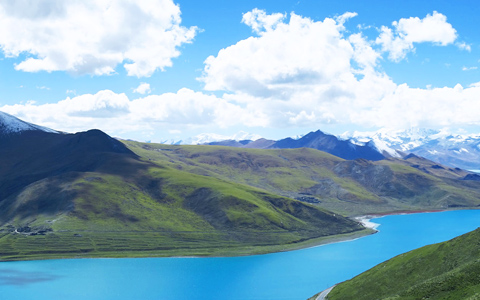
Shalu Monastery.
Tickets: Prices, Booking, and Tips
Visiting Shalu Monastery is an enriching experience, and understanding the ticketing process can enhance your journey. Here’s everything you need to know about prices, booking, and some handy tips to make the most of your visit.
Admission Fee
To enter Shalu Monastery, the admission fee is CNY 40 (approximately USD 6). This nominal charge grants you access to the monastery’s captivating chapels, exquisite murals, and the serene ambiance that envelops this historic site.
Opening Hours
Shalu Monastery is open daily from 9:30 AM to 5:00 PM. To fully appreciate the beauty and spiritual atmosphere of the monastery, it is advisable to arrive well before closing time. Keep in mind that some of the smaller chapels may close earlier in the afternoon, so plan your visit accordingly.
Getting There
Located about 20 kilometers southeast of Shigatse, Shalu Monastery is accessible via various transportation options. Renting a car for a round trip will typically cost around CNY 100. Alternatively, you can join a guided tour that includes transportation, which can add convenience to your travel plans.
Booking Tips
-
Plan Ahead: Given the popularity of Tibetan tours, especially during peak seasons (spring and autumn), it’s wise to book your tickets and any necessary transportation in advance. This will ensure you secure your spot and avoid any last-minute hassles.
-
Consider Group Tours: If you’re traveling solo or as a couple, consider joining a small group tour. Many tour operators offer packages that include Shalu Monastery, often bundled with additional attractions like Tashilhunpo Monastery and Gyantse Dzong.
-
Check for Discounts: Some tour providers may offer early bird discounts or promotions for larger groups. Always inquire about potential savings when booking your trip.
-
Respect Local Customs: When visiting the monastery, ensure you dress modestly and observe local customs. This is not only a place of historic significance but also a functioning religious site.
-
Capture the Moments: Don’t forget your camera! The stunning architecture and breathtaking mountain views provide ample opportunities for memorable photographs. However, be respectful of areas where photography may be restricted.
By following these guidelines and tips, your visit to Shalu Monastery will surely be a memorable part of your Tibetan adventure. Enjoy the serenity, immerse yourself in the culture, and take the time to reflect within this sacred space.
How to Get There: A Complete Transportation Guide
Reaching Shalu Monastery, a gem nestled in the Shigatse Prefecture of Tibet, is an adventure that unveils the stunning landscape and rich culture of this enchanting region. Located approximately 20 kilometers southeast of Shigatse, the monastery is easily accessible through various modes of transportation. Here’s a complete guide to help you get there effortlessly.
By Car
The most convenient way to visit Shalu Monastery is by car. Renting a vehicle from Shigatse is a popular option, and you can expect to pay around 100 yuan for a round trip. The drive offers picturesque views of Tibetan landscapes, making the journey as rewarding as the destination.
- From Shigatse: Head southeast toward Shalu Monastery, which is about a 30-minute drive. The route is straightforward, and you’ll be greeted by the breathtaking natural beauty characteristic of this region.
- From Gyantse: If you’re coming from Gyantse, the journey is slightly longer at around 69 kilometers. It’s advisable to leave early in the day to ensure you have enough time to explore the monastery before it closes.
By Public Transport
If you prefer public transportation, there are options available, although they might require a bit more planning:
- Bus Services: Buses run between Shigatse and Gyantse, providing a cost-effective means of travel. Once you arrive in Shigatse, you can catch a local bus or shared taxi to Shalu Monastery. Check the local schedules as they can vary.
- Shared Taxis: These are a popular choice among travelers. You can find shared taxis at various points in Shigatse or Gyantse. They are relatively affordable and can quickly take you to the monastery.
From Lhasa
If you are traveling from Lhasa, it’s crucial to plan your itinerary carefully, as the distance is significant. The journey can take around 6-8 hours by car or bus.
- Guided Tours: Many travelers opt for guided tours from Lhasa that include stops at significant sites such as Shalu Monastery. These tours provide the convenience of transportation, a knowledgeable guide, and often include other attractions along the way.
Important Tips
- Travel Permit: Ensure you have obtained your Tibet Travel Permit before your journey, as this is essential for entering the region.
- Best Times to Visit: The ideal months for visiting Shalu Monastery are from April to June and September to November. The weather is generally mild and favorable during these seasons, allowing for a more enjoyable experience.
- Timing Your Visit: The monastery is open from 9:30 AM to 5:00 PM. It’s recommended to arrive in the morning to fully immerse yourself in the serene ambiance and explore its remarkable murals and chapels without feeling rushed.
No matter how you choose to reach Shalu Monastery, the journey offers an opportunity to experience the breathtaking landscapes and rich culture of Tibet. Embrace the adventure and enjoy the spiritual serenity that awaits you at this historic site.

Shalu Monastery.
Local Cuisine and Accommodation Nearby
When visiting Shalu Monastery, indulging in the local cuisine and finding a comfortable place to stay can enhance your overall experience. Nestled in the stunning landscape of Tibet, the area surrounding the monastery offers a delightful glimpse into the flavors and hospitality of Tibetan culture.
Culinary Delights
-
Tibetan Tsampa: A staple food in Tibetan culture, tsampa is made from roasted barley flour mixed with water or tea. It’s hearty, nutritious, and often enjoyed with yak butter. Many local eateries offer tsampa, allowing you to experience an authentic taste of Tibetan life.
-
Momos: These delicious dumplings, typically filled with meat or vegetables, are a must-try. Served steamed or fried, momos are a popular snack or meal option, often accompanied by a spicy dipping sauce.
-
Thukpa: A warming noodle soup that is perfect after a day of exploring, thukpa is a comforting dish made with noodles, vegetables, and your choice of meat. It’s widely available in local restaurants and a great way to rejuvenate.
-
Yak Butter Tea: This unique beverage is a quintessential part of Tibetan culture. Made from tea, yak butter, and salt, it’s rich and surprisingly refreshing. Many teahouses in the vicinity serve this traditional drink, perfect for warming up in the cool mountain climate.
-
Local Restaurants: Look for small family-run restaurants around Shigatse, where you can enjoy home-cooked meals. These spots often feature a daily special and are known for their friendly service and authentic flavors.
Places to Stay
-
Shigatse Hotel: Located in the heart of Shigatse, this hotel offers comfortable accommodations with stunning mountain views. It’s an excellent choice for international travelers, featuring Western amenities and a restaurant that serves both local and international cuisine.
-
Manasarovar Hotel: Just a short drive from Shalu Monastery, this hotel combines Tibetan hospitality with modern comforts. Enjoy cozy rooms and an on-site restaurant that serves a mix of Tibetan and Chinese dishes.
-
Tashi Choten Hotel: Situated near Shigatse’s bustling market, this hotel provides a great base for exploring the area. It features clean rooms, a friendly atmosphere, and easy access to local eateries.
-
Guesthouses and Homestays: For a more immersive experience, consider staying in a local guesthouse or homestay. These options allow you to connect with Tibetan culture and enjoy home-cooked meals prepared by your hosts. Look for recommendations in Shigatse or ask locals for the best places to stay.
Conclusion
Exploring the local cuisine and securing comfortable accommodation near Shalu Monastery enhances your journey through this vibrant region. From hearty Tibetan dishes to warm, inviting places to rest, you’ll find that the flavors and hospitality of Tibet are as enriching as the spiritual experiences awaiting you at the monastery.
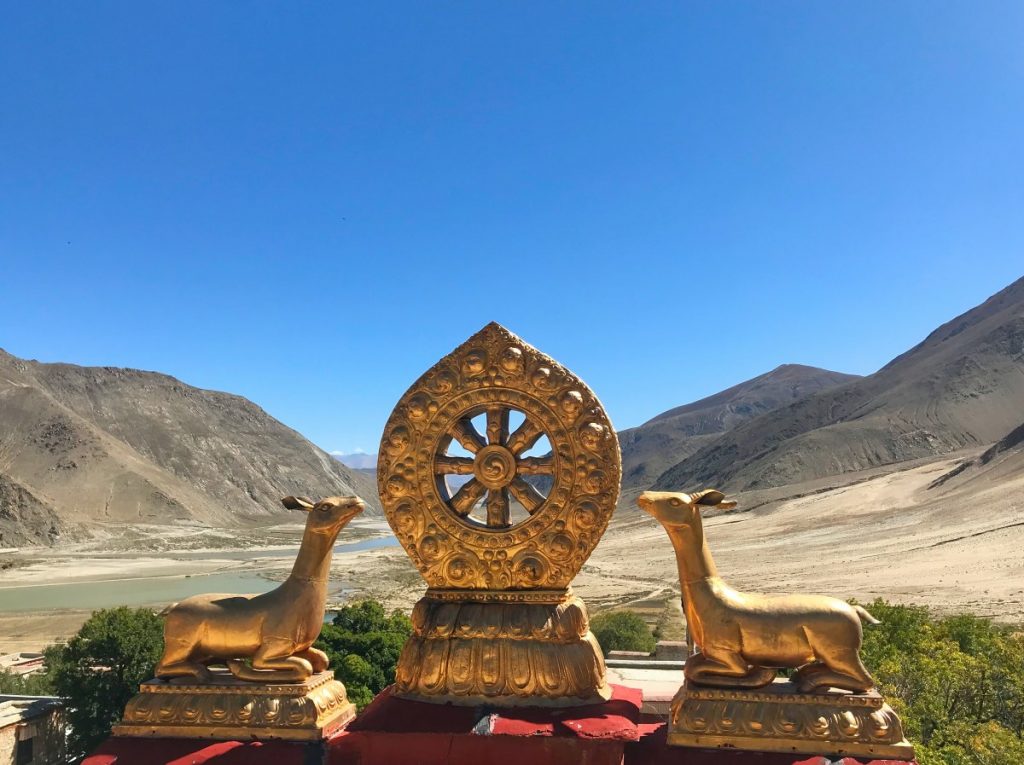
Shalu Monastery.
Frequently Asked Questions
-
What is the best time to visit Shalu Monastery?
The ideal time to visit Shalu Monastery is during the spring (April to June) and autumn (September to November) months. These seasons offer mild weather, allowing for a more pleasant exploration of the monastery and its surroundings. -
How do I get to Shalu Monastery from Shigatse?
Shalu Monastery is approximately 20 kilometers southeast of Shigatse. You can easily rent a car for about 100 yuan for a round trip. Public transport options may also be available, but renting a car offers more convenience and flexibility. -
Is there an admission fee for Shalu Monastery?
Yes, there is an admission fee of CNY 40 to enter Shalu Monastery. This fee helps to maintain the site’s facilities and preservation efforts. -
What can I expect to see at Shalu Monastery?
Shalu Monastery is renowned for its stunning 14th-century murals, intricate architecture that blends Tibetan and Chinese styles, and serene prayer halls. As you explore, you will encounter ancient prayer wheels, stupas, and the tranquil ambiance that invites reflection and spiritual connection. -
Are there any facilities available for visitors at the monastery?
While Shalu Monastery is primarily a place of worship and study, basic facilities such as restrooms and small areas for resting may be available. However, it is advisable to bring your own supplies, such as water and snacks. -
Can I interact with the monks during my visit?
Yes, visitors are often welcomed to interact with the monks. They may share insights about the monastery’s history, the significance of the murals, and their spiritual practices. However, it’s important to be respectful and mindful of their routines. -
What is the altitude of Shalu Monastery, and should I take any precautions?
Shalu Monastery is located at an altitude of approximately 3,890 meters (12,762 feet). Visitors should be cautious of altitude sickness. It’s recommended to acclimatize in Lhasa or Shigatse before your visit and stay hydrated. -
Are there any nearby attractions I should consider visiting?
Yes, nearby attractions include Tashilhunpo Monastery, Gyantse Dzong, and the stunning Yamdrok Lake. These sites complement the spiritual experience at Shalu Monastery and offer a deeper understanding of Tibetan culture and history.
Final Thoughts on Your Trip
As your journey to Shalu Monastery comes to a close, take a moment to reflect on the profound beauty and serenity that this hidden gem offers. Nestled amidst the breathtaking landscapes of Tibet, Shalu is not just a sanctuary of spirituality; it is a vibrant tapestry woven from centuries of history, artistry, and devotion. Every corner of the monastery, from its intricately painted murals to the tranquil prayer wheels, invites you to pause and connect with something greater than yourself.
Engaging with the monks, who embody the essence of compassion and wisdom, enriches your experience and deepens your understanding of Buddhist philosophy. The harmonious blend of Tibetan and Chinese architectural styles serves as a reminder of the diverse cultural influences that have shaped this sacred site, making it a unique destination for those eager to explore the spiritual heart of Tibet.
As you leave behind the peaceful ambiance of Shalu Monastery, carry with you the lessons learned and the quiet moments of reflection. Whether you are returning to the hustle and bustle of daily life or continuing your adventure through the majestic landscapes of Tibet, may the tranquility of this sacred place linger in your heart, inspiring you to seek inner peace and understanding in every step of your journey.